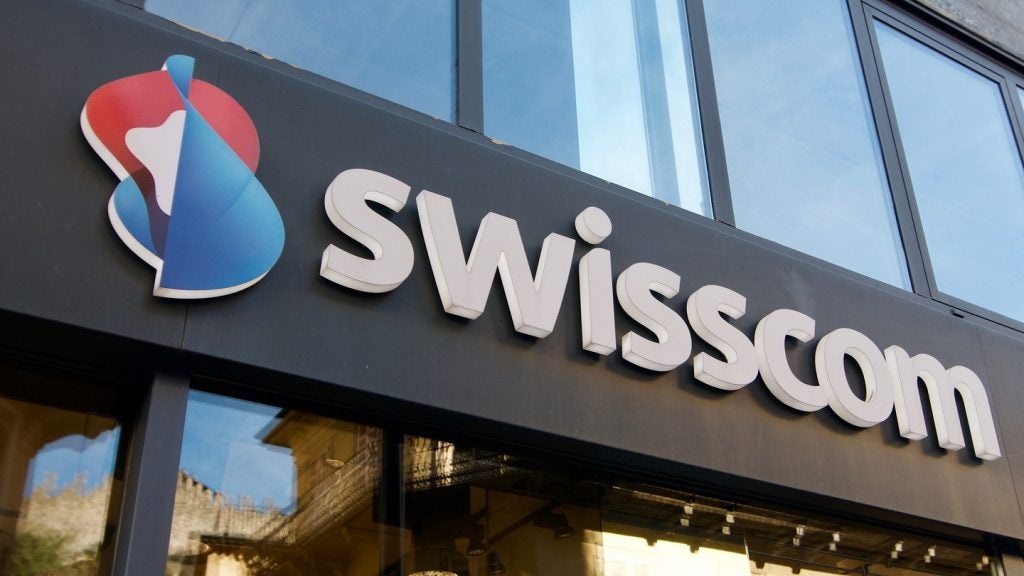South Africa’s life insurance
industry weathered the global financial crisis well, with premium
income sustaining only a minor setback. However, there is a growing
realisation among insurers that they have outgrown their home
markets and many are turning to Africa to seek new long-term growth
opportunities.
 South Africa’s life
South Africa’s life
insurance industry did not escape the impact of the global
financial crisis entirely, but compared to damage done in many
other markets it weathered it well.
According to the Association for Savings and
Investment South Africa (ASISA) the biggest impact of the crisis
was felt in the first half of 2009. This was seen in a decline in
new business premium income of 14.5% compared with the second half
of 2008 to ZAR27.7bn ($3.84bn).
New business recovered in the second half of
2009, rebounding to ZAR33.6bn to leave total new business premium
income for the year at ZAR62bn, down 5.3% compared with ZAR65.5bn
in 2008, a year in which a 14.5% increase was recorded.
In terms of total business from existing
individual premiums, group insurance premiums, investment income
and fees, ASISA reported a decline of only 1% in 2009, from
ZAR251.9bn in 2008 to ZAR248.8bn, ranking the country’s life
industry as the world’s 16th largest. The life industry paid out
benefits of more than ZAR175.6bn in 2009 to policyholders,
beneficiaries and pension fund members.
Driven primarily by a recovery in equity
investment values, the life industry’s total assets at the end of
2009 were 4.6% up compared with the previous year-end at
ZAR1.13trn. This improvement took the industry close to the
all-time high pre-crisis total asset level of ZAR1.15trn at the end
of 2007.
How well do you really know your competitors?
Access the most comprehensive Company Profiles on the market, powered by GlobalData. Save hours of research. Gain competitive edge.

Thank you!
Your download email will arrive shortly
Not ready to buy yet? Download a free sample
We are confident about the unique quality of our Company Profiles. However, we want you to make the most beneficial decision for your business, so we offer a free sample that you can download by submitting the below form
By GlobalDataAccording to ASISA deputy CEO Peter Dempsey,
the value of surrendered policies in 2009 continued to rise,
increasing by 14% from ZAR38bn in 2008 to ZAR43bn. This followed
increases of 21% in 2008 and 13% in 2007. In 2009, 5.2m policies
lapsed; 3m first year policies and 2.2m policies in their second
year.
High penetration
Generally the South African life
insurance industry has enjoyed robust growth in recent years. For
example, new individual premium income increased by almost 50%
between 2005 and 2008 before falling slightly in 2009.
However, unlike many emerging economies, South
Africa’s life industry has a long history which dates back to the
establishment of Old Mutual in 1845. As a result the industry is in
many respects akin to those in developed markets, with the most
striking feature of this being life insurance penetration. At 10%
of GDP in 2009 (according to Swiss Re), South Africa ranked second
in the world behind Taiwan at 13.8% and on a par with the UK.
The reason for this high penetration is South
Africa’s history of having very low social welfare benefits on
which consumers can rely on, explained Neil Young, an analyst at
Cape Town-based Coronation Asset Managers.
Although in recent years the government has
increased the scope of social grants dramatically, individual
payments remain low and are focused on assisting the poorest of the
poor.
According to Statistics South Africa (SSA), the
country has an unemployment rate among those of working age of just
under 25%, or some 4.3m people. Using SSA’s expanded definition of
unemployment which includes those people who have given up looking
for work, more than one-third of the working-age population is
unemployed. During the financial crisis some 1m jobs were lost in
the formal, non-agricultural sector.
Not surprisingly, life insurance is very much
the domain of South Africa’s more affluent citizens. According to
non-profit organisation Finmark Trust, in 2008 a mere 7% of South
African blacks had some form of life insurance, excluding funeral
cover, compared with 46% of whites and 32% of Asians.
Blacks comprise 69% of the country’s population
of about 48.7m, whites 11% and Asians 2%. The balance of the
population comprises people of mixed race. Across all population
groups Finmark estimates that out of 18m adults in the lowest 5 out
of 10 income categories, a mere 375,000 have life cover. Based on
Finmark data, 78% of South Africa’s population is under 45 years
old.

Casting the net wider
South Africa’s expanding middle class
and life insurance industry initiatives to make micro-life
insurance products broadly available has undoubtedly helped fuel
growth in recent years. Spearheading the insurance industry’s
initiative are products branded Zimele, aimed at consumers
earning less than ZAR3,000 per month, a potential market of some
19m people.
First introduced in 2007 were
Zimele-approved funeral policies. In 2008 some life
companies introduced credit life insurance, life cover, and
physical impairment cover under the Zimele brand.
According to Dempsey, at the end of December 2009 1.9m
Zimele-approved policies were in force, up almost 12% from
1.7m at the end of 2008. He noted that more women own
Zimele policies than men.
South African retailers are also playing an
important role in broadening the availability of insurance. For
example, For example, clothing retailer Edcon, in a joint venture
with composite insurer Hollard, distributes accidental death and
disability policies for between ZAR25 and ZAR50 a month. According
to UK-based consultancy Finaccord, 19% of South Africa’s major
retailers distribute some form of insurance, ranking the country
third behind Chilean and Peruvian retailers.
A key factor in reaching out to a broader
market in South Africa has been life insurers’ ability to factor in
the impact of mortality related to HIV-AIDS. According to SSA an
estimated 5.7m South African’s – more than one in nine – were
living with HIV and AIDS in 2009. HIV-AIDS is not confined to the
poor, with an estimated 2.5m HIV- positive South Africans in the
top five income segments. An estimated 250,000 South Africans died
of AIDS in 2008.
“HIV-AIDS is having a very real impact on
[South African] society and the economy,” said Arie Malan, a
spokesman for Munich Re’s African unit based in Johannesburg.
However, he added that life insurers were
coping well and had experienced very little negative impact from an
unpredictable incidence of claims.
“The impact of HIV-AIDS on claims is not as
serious as many people once feared. There are good models available
and make [HIV-AIDS] as predictable as the impact of diabetes,” said
Malan.
He added that many life insurers are now
“dabbling” in the provision of cover for people affected by
HIV-AIDS.
The needs of those infected with HIV-AIDS have,
in fact, been served by a number of specialist life insurers for a
number of years. These include AllLife – established in 2006 and
which issues policies underwritten by Centriq Life, a 60%-owned
unit of South Africa’s largest general insurer Santam. Policies are
reinsured through US reinsurer Gen Re.
The basis of AllLife’s ability to cover
HIV-positive people is its rigorous enforcement of the use of
anti-retroviral drugs. Still very much a small-scale venture,
AllLife has business in force of about ZAR1bn covering 5,000
policyholders.
In 2009 AllLife received the backing of
LeapFrog, the world’s first private equity firm focused on
micro-insurers. Armed with ZAR50m from the firm, AllLife believes
it can grow its policyholders to 50,000 HIV-positive and diabetic
policyholders “within a few years”.
 Looking to new
Looking to new
markets
But for all the efforts of South
African life insurers to deepen their reach in their home market,
it is clear that growth lies in diversification. One route has been
an increased emphasis on the broader aspects of financial
services.
Two of the country’s largest life insurers,
Sanlam and Liberty Life, have laid particular emphasis on changing
their image.
“Their strategy is to reposition as asset
gatherers and wealth managers,” said Young.
Liberty Life now describes itself as a “wealth
manager”, with a major part of this strategy executed in 2007 when
it acquired a 62.6% stake of its joint venture partners in asset
management company Stanlib for ZAR1.57bn. Liberty’s major partner
in Stanlib was South Africa’s largest bank, Standard Bank, which is
Liberty’s controlling shareholder through a 53.6% direct equity
stake.
Stanlib has 400,000 individuals as clients and
also manages assets on behalf of Liberty Life and third parties. At
the end of 2009, Stanlib had assets under management of
ZAR318bn.
Sanlam, which demutualised in 1998, launched a
transformation strategy in 2004 which emphasises wealth management
rather than its traditional life assurance business. Sanlam has
been arguably the most successful of the major South African
insurers in recent years, indicated by its share price.
Specifically, over the past five years Sanlam’s
share price has doubled and is trading at its highest level since
the insurer’s stock exchange listing in 2008. Over the five-year
period, Liberty’s share price has risen 40% while Old Mutual Plc’s
share price has fallen by about 10% in ZAR-terms.
In 2009, Sanlam reported total revenue of
ZAR60.7bn and profit attributable to shareholders of ZAR4.4bn, up
from ZAR2.5bn in 2008 and slightly below the record ZAR4.8bn
reported in 2007.
Liberty reported total revenue of ZAR44.2bn in
2009 and an attributable profit of ZAR42m, down from ZAR1.1bn in
2008 and ZAR1.45bn in 2007. Old Mutual’s total revenue in 2009 –
including that of its European, US and Asian operations – came in
at ZAR287.8bn and attributable profit at ZAR2.45bn, down from
ZAR9.8bn in 2008 and ZAR12.9bn in 2007.
 Foreign
Foreign
expansion
Other than Old Mutual, which
demutualised in 1999 and changed its domicile from South Africa to
the UK in the same year, international expansion by South African
insurers has been limited. In recent years this has begun changing
as the limitations of expansion in their home market have become
increasingly evident.
Sanlam has ventured into the UK, other parts
Europe and Australia, where in association with foreign partners
asset management is its prime objective. Among Sanlam units
spearheading the insurer’s offshore drive is Sanlam International
Investment Partners (SIIP).
“We believe it is the time to be expanding
offshore,” SIIP MD Hendrik Pfaff explained to LII.
He added that the strategy is to acquire stakes
in smaller asset management firms “with great track records” and an
owner-driven model. So far SIIP has acquired stakes in specialist
equity, bond and property investment firms in Australia and the UK
and has total assets under management of $5.5bn, said Pfaff.
Sanlam has also moved into India, where in May
2005 it launched Shriram Life Insurance Company, a joint venture in
which it has a 26% stake and Indian financial services company
Shriram Group the balance.
For the greater part, South African insurers
are looking to developing markets to expand. This was highlighted
in a study published by professional services firm
PricewaterhouseCoopers (PwC) titled Strategic Issues in South
African Insurance 2010 and authored by Brian Metcalfe, an
associate professor in the Business School at Brock University,
Ontario, Canada. For the study, Metcalfe interviewed executives
from 15 life insurers, 13 general insurers and two reinsurers.
“South African insurers have little interest in
developed markets,” said Metcalfe. “Instead, they see opportunities
to leverage their unique skill sets and expertise in other
developing markets.”
Specifically, the study found that Europe,
Australia and the US collectively were only of interest to three
companies.
 Focus on
Focus on
Africa
Although participants in the survey are
expanding into Asia and South America, expansion into the rest of
sub-Saharan Africa is also “gaining traction,” according to
Metcalf. Many life and general insurers have significant
relationships in key African markets and it seems highly likely
that this trend will continue to develop.
Participants also indicated that they were
interested in seeking strategic investors if it allowed them ready
access to other markets – particularly within Africa, said
Metcalf.
Africa, excluding South Africa, represents more
by way of potential than actual business to be had. According to
Swiss Re, South Africa accounted for 88% of total life premium
income of $32.56 generated in Africa in 2009 and 49% of total
general insurance premium income of $16.72bn. There are 62
countries in Africa.
However, the potential is there and was
highlighted in a study published by consultancy McKinsey &
Company in June 2010. According to McKinsey, Africa’s economic
growth is creating “substantial new business opportunities” that
are often overlooked by global companies.
McKinsey noted that at least four groups of
industries – consumer-facing, agriculture, resources and
infrastructure – are projected to generate as much as $2.6trn in
revenue annually by 2020, or $1trn more than at present.
The rise of the African urban consumer will
also fuel long-term growth, predicts McKinsey. At present, 40% of
Africans live in urban areas, a portion close to China’s and
continuing to expand. In total there are 52 cities in Africa with
populations of over 1m, while by 2030, the continents’ top 18
cities could have a combined spending power of $1.3trn, predicted
the consultancy.
The number of African households with
discretionary income is also projected to rise by 50% over the next
10 years, to reach 128m. McKinsey puts the annual income threshold
at which discretionary starts at $5,000.
Although many South African insurers have long
had operations in neighbouring countries such as Namibia, Botswana
and Zimbabwe, almost 30 of the insurers covered by PwC’s survey
indicated that they are considering African ventures.
A number are already extending their reach in
Africa. Among them is Liberty Health, which in March 2009 acquired
a 35% stake in Nigerian health management organisation Total Health
Trust (THT). At present, about 3m Nigerians have private health
insurance in a market Liberty Health believes has the potential to
increase to 40m people.
The deal includes an agreement with Liberty
Health for provision of systems through its technology subsidiary
NHA Technology Systems and back office administration through its
Cape Town-based unit Vmed. Liberty Health intends its stake in THT
to 51% by 2012.
The first significant product to be introduced
by Liberty Health in Nigeria was Optimum Global, an international
evacuation product underwritten by UK insurer Aviva and Liberty
Health which offers benefit limits of between $1m and $2.5m to
individual, family and corporate members. Liberty Health plans to
distribute the product in 17 African countries over a five-year
period with initial launches in Kenya, Mozambique, Angola and the
Democratic Republic of Congo. By 2014, Liberty Health aims to have
60,000 lives covered by the product.
Liberty Health CEO, Peter Botha commented at
the time of the product’s launch: “The vision for Liberty Health is
to be a pan-African health business, providing technology health
solutions in growing markets.”
In December 2009, Liberty Health followed this
move with the acquisition of a 57% stake in CfC Insurance Holdings,
which operates life, general and health insurance units in Kenya
and Tanzania, through Standard Bank. Standard Bank has operations
in 18 African countries.
Another South African life insurer,
Metropolitan, has also announced that it is seeking a partner in
Kenya. In 2007, Metropolitan entered into a 50:50 joint venture
with Nigeria’s biggest retail bank UBA Nigeria, to form UBA
Metropolitan Life Insurance.
Sanlam has also extended its African footprint
of late, by launching a grassroots life insurance business in
Uganda this year. Though Sanlam has operations in eight other
African countries outside South Africa, the Ugandan unit, Sanlam
Life Insurance (U) Limited, is the first to carry its brand
name.
In Uganda, Sanlam joins Liberty Health, which
launched the country’s first pure life insurer in August 2007.
There are now 21 insurers in Uganda, six of which are composite
insurers.
Apparently not to be outdone, Old Mutual Africa
MD Johannes Gawaxab said in a statement in June 2009: “Expansion
into Africa forms an integral part of Old Mutual’s growth and
building an African franchise is consistent with our long-term
strategy.”
Old Mutual is reported by South African media
to be in talks with a number of potential life insurance partners
in West Africa. Old Mutual already has operations in Namibia,
Kenya, Malawi, Swaziland and Zimbabwe.
 Change at
Change at
home
PwC’s survey also revealed that
significant change in South African insurers’ home market can be
expected over the next five years.
Of particular note, 12 of the 30 participants
in its survey believe they will undergo significant merger and
acquisition activity over the next five years. However the vast
majority of respondents (about three-quarters) said they will not
divest parts of their business in the future.
The focus where change occurs appears likely to
be on strategic partnerships. Twelve respondents (40%) said they
plan to seek a foreign strategic investor over the next five years
while some 80% emphasised that joint ventures and partnerships will
be a key element in their strategies.
This year has already seen major change in the
South African life insurance landscape, with the announcement in
late-March that two South African life insurers, Momentum and
Metropolitan, are to merge. This will create the country’s
third-largest life insurer and end banking group FirstRand’s direct
involvement in insurance.
Under the proposed deal, FirstRand will sell
its stake in its wholly-owned unit Momentum to Metropolitan, which
in turn will issue new shares to FirstRand. The banking group will
then own about 60% of the merged entity in which it intends to
retain a stake of more than 25% with the balance to be distributed
to FirstRand shareholders.
The merger will bring together very different
companies. Metropolitan operates mainly in the low- to
middle-income retail markets with entry-level products accounting
for about 80% of its sales. A very different company, Momentum
focuses primarily in the upper-income retail market.
Momentum is the larger of the two in terms of
embedded value which is reported at ZAR18bn while Metropolitan’s
stands at ZAR12bn.
Momentum is also the larger of the two in terms
of premium income. In the year to 30 June 2009 Momentum reported
new recurring premium income of ZAR2.26bn and new single premium
income of ZAR33.83bn for a total of ZAR36.1bn, ranking it second
behind Old Mutual. A significant amount of single premium income
relates to unit-linked products.
In 2009 Metropolitan reported new recurring
premium income of ZAR1.16bn and new single premium income of
ZAR3.42bn, ranking it fifth in the market.
Both companies also have significant
involvement in South Africa’s private health insurance market.
Momentum administered 553,200 lives at 30 June 2009 and
Metropolitan 855,000 principal members and a total of 2m lives at
the end of 2009.
Better times ahead
Shrugging of the impact of the
financial crisis South African insurers are looking to stronger
conditions, reports professional services firm Ernst & Young
(E&Y). The conclusion was drawn from a survey conducted amongst
insurers based on the first quarter of 2010 which found three
quarters of them satisfied with business conditions.
“For the first time in over a year, life
insurers have indicated that profits are growing once again,” said
E&Y spokesman Tim Rutherford. “Profit trends improved vastly in
the fourth quarter of 2009, but were not yet reflecting positive
growth. This has shifted sharply in 2010.”







